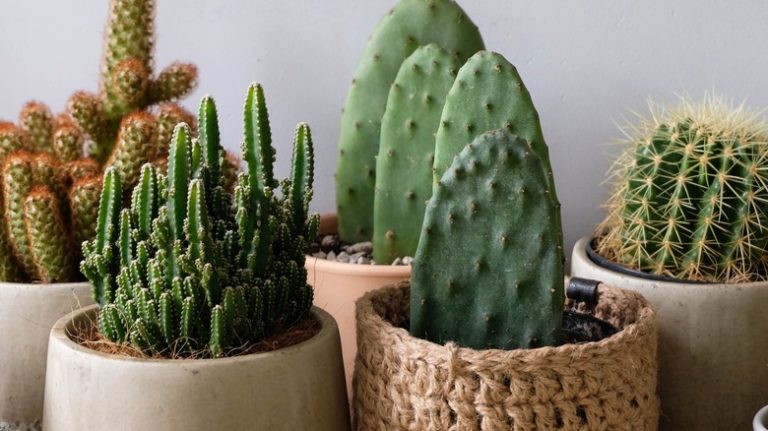The Common Juniper, also known as Juniperus communis, is a species of woody plants from the Juniper family. It is a small evergreen shrub that can grow up to 10 feet in height. The leaves of the Common Juniper are small and needle-like, with a length of around 1 inch.
One of the distinguishing features of the Common Juniper is its fruit. The fruits are called juniper berries and are small, round, and bluish-black in color. These berries are often used in cooking to add flavor to various dishes and beverages. They have a unique aroma and a slightly sweet and bitter taste.
In addition to its culinary uses, the Common Juniper has also been used for medicinal purposes for centuries. It is known to have diuretic, antiseptic, and anti-inflammatory properties. The berries of the Common Juniper can be used to treat urinary tract infections, digestive disorders, and arthritis.
Furthermore, the Common Juniper has been used for various other purposes. The wood of the Juniperus communis is often used to make furniture, tools, and other wooden items. The dried leaves and fruits of the plant are also used as ingredients in herbal teas and skincare products.
It is important to note that while the Common Juniper has many potential uses, precautions must be taken when using it. Some people may be allergic to the plant, so a patch test is often recommended before using any products that contain juniper berries. Additionally, the consumption of large quantities of juniper berries may cause gastrointestinal issues.
Juniper Leaf
The leaf of the common juniper (Juniperus communis) is a woody structure that grows at the level of about 5-25 mm, among other leaves of the plant. It is a privilege of the common juniper to have such unique and distinct leaves.
Juniper leaves have a shape similar to that of a scale, and grow in groups of three, forming the leaflets of the juniper plant. These leaflets have a length of about 1-2 mm and a width of about 1 mm. The leaflets are arranged in opposite pairs along the branches of the juniper plant. Each leaflet is covered in a waxy coating, which gives it a greenish-blue color, and helps protect it from environmental factors.
The leaf has several functions, one of which is the photosynthesis process. Through this process, the juniper leaf uses sunlight to convert carbon dioxide and water into glucose and oxygen. This glucose provides energy to the plant and the oxygen is released back into the atmosphere.
Another important function of the juniper leaf is its role in the reproductive cycle of the plant. The leaf houses the reproductive organs of the juniper plant, including the pollen-producing structures and the ovules. These structures are responsible for the production and dispersal of the plant’s pollen, which is necessary for the reproduction of the juniper species.
In addition to its role in photosynthesis and reproduction, the juniper leaf also plays a role in healthcare. The leaf contains various compounds and chemical substances that have been found to have medicinal properties. These properties include antimicrobial, anti-inflammatory, and diuretic effects. Juniper leaf extracts and oils are used in the treatment of various health conditions, such as urinary tract infections, digestive disorders, and skin irritations.
It is important to note that not all juniper species have the same medicinal properties. While some species, such as Juniperus communis, have been extensively studied for their therapeutic potential, others may have different chemical compositions and thus different health effects. Therefore, it is recommended to consult reliable sources or healthcare professionals for accurate information on the therapeutic uses of juniper leaf.
Before using juniper leaf or any juniper-based products for medicinal purposes, it is necessary to take certain precautions. Juniper leaf contains certain compounds that may have side effects or interact with certain medications. It is advisable to consult a healthcare professional or herbalist before using juniper leaf as a treatment option.
In addition to its medicinal properties, the juniper leaf also has culinary uses. The fruits of the juniper plant, often referred to as juniper berries, are used as a flavoring ingredient in various cuisines. These berries have a strong, aromatic flavor that adds a unique taste to certain dishes, such as game meat and gin.
In conclusion, the juniper leaf is a crucial part of the common juniper plant. It plays a vital role in photosynthesis, reproduction, and healthcare. Its distinctive shape, waxy coating, and medicinal properties make it a unique and valuable leaf among other plants in the Juniperus family. When using juniper leaf for medicinal or culinary purposes, it is important to gather accurate information from reliable sources and take the necessary precautions.
Sources:
1. “Juniperus” – The Plant List: Version 1.1. (www.theplantlist.org)
PRECAUTIONS
Before using common juniper (Juniperus communis) or any juniperus plants for medicinal purposes, it is important to consider the following precautions:
- Consult a healthcare professional or a qualified herbalist as a source of reliable information and guidance regarding the appropriate level and duration of use.
- Do not use common juniper or any juniperus plants as a substitute for prescribed medications without consulting a healthcare professional.
- If you are pregnant or breastfeeding, it is recommended to avoid using common juniper or any juniperus plants due to the potential risks involved.
- Individuals with known allergies or hypersensitivity to juniperus plants or any of their ingredients should avoid using common juniper or any juniperus-derived products.
- Common juniper fruits are not recommended for consumption unless they have been processed and prepared appropriately by a qualified source.
- Be cautious when using common juniper or any juniperus products in high doses as excessive consumption may cause adverse effects.
- If you are taking any medication or have an underlying health condition, it is important to consult with a healthcare professional before using common juniper or any juniperus products in any form.
- Store common juniper leaf, fruit, or any juniperus products in a cool, dry place, and away from direct sunlight or heat sources.
- Keep common juniper products out of reach of children and pets to prevent accidental ingestion.
- Handle common juniper with care, as the plants may have sharp woody structures that can cause injury.
Please note that the above precautions are not exhaustive, and it is always advised to seek professional advice and take necessary precautions before using common juniper or any juniperus products.
Common Juniper Juniperus communis
Common Juniper (Juniperus communis) is an evergreen shrub or small tree that belongs to the cypress family. It is native to Europe, Asia, and North America. The plant can grow up to 10 meters in height and has an average diameter of 1-2 meters at maturity. The leaves of the Common Juniper are scale-like and arranged in opposite pairs along the branches.
One of the main characteristics of the Common Juniper is its fruit, which is a small, woody cone-like structure called a juniper berry. These berries start off green and then turn dark blue-black when ripe. The berries are about 4-12 mm in diameter and are often used in culinary dishes and beverages for their unique flavor.
Common Juniper has been used for centuries for its various medicinal properties. It has been known to have antiseptic, diuretic, and digestive properties, among others. The berries and leaves of the plant are often used to treat digestive disorders, urinary tract infections, and respiratory conditions. However, it is important to note that juniper should be used with caution and under the guidance of a healthcare professional, as excessive use or consumption can have adverse effects.
When using juniper berries or leaves for medicinal purposes, it is important to take certain precautions. It is recommended to start with a low dosage and gradually increase it if necessary. It is also advised to consult a healthcare professional before using juniper if you have any underlying health conditions or are taking medication.
Juniperus communis has various other uses as well. Its wood is often used for making furniture, and its essential oil is used in the production of perfumes and cosmetics. It is also used as a spice in certain cuisines and as an ingredient in alcoholic beverages, such as gin.
In conclusion, the Common Juniper Juniperus communis is a versatile plant with a wide range of uses. Whether you are looking to enhance your cooking, treat certain health conditions, or simply enjoy its unique flavor, juniper is an excellent option.
Sources:
– Information leaflet: Common Juniper Juniperus communis
– The Uses and Replicators of Juniper in Modern and Ancient Industry
– Healthcare precautions required before using juniper products
– Traffic light system for juniper plants and devices
leaf
A leaf is an important part of the common juniper (Juniperus communis) plant. It is a woody structure that grows on the branches of the juniper tree. The leaf plays a crucial role in the plant’s life cycle and serves several functions.
One of the main functions of the leaf is to treat sunlight and convert it into energy through the process of photosynthesis. It contains chlorophyll, which captures the sunlight and uses it to produce glucose, the plant’s main source of energy.
The leaf also helps in the release of oxygen into the atmosphere through the process of respiration. During respiration, the plant uses oxygen and releases carbon dioxide.
Another important function of the leaf is to regulate the water balance of the plant. It has small openings called stomata, which allow gases to enter and exit the leaf. Through these stomata, the leaf also releases excess water in the form of vapor, a process called transpiration. This helps the plant maintain its water balance.
The leaf of the common juniper has a needle-like shape, which reduces water loss through evaporation. This is an adaptation to its natural habitat, where water availability may be limited.
The leaf also plays a role in the reproduction of the juniper plant. The plant produces small fruits called juniper berries, which are actually modified cones. The leaf protects the developing berries and helps in their dispersal through wind or animal interactions.
In addition, the leaf contains valuable information about the plant and its health. By examining the leaf’s color, shape, and overall condition, experts can gather information about the plant’s nutrient levels, diseases, and environmental stress. This information can be used to make informed decisions about the plant’s care and treatment.
It is important to note that not all juniper species have leaves. Some species, such as the creeping juniper (Juniperus horizontalis), have scale-like leaves instead.
Before using any juniper leaf for medicinal purposes, it is important to consult reliable sources and take necessary precautions. Healthcare professionals can provide information about the appropriate dosage, potential interactions with other medications, and any contraindications.
Overall, the leaf of the common juniper (Juniperus communis) has several important functions and provides valuable information about the plant’s health. It is an essential part of the plant’s life cycle and plays a vital role in its growth, reproduction, and overall well-being.




